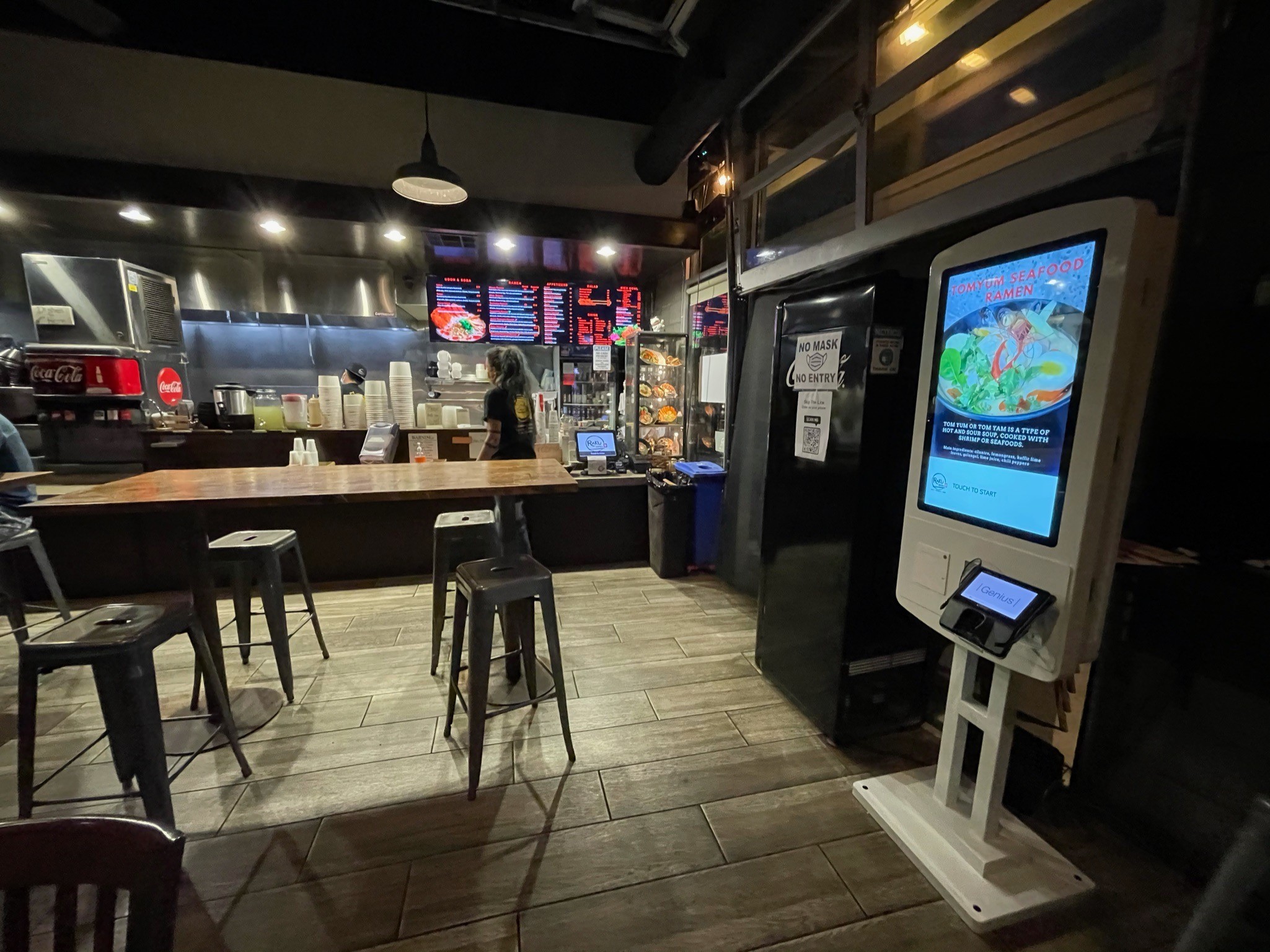
Published: Jan 6, 2024
Los Angeles, California
Overcoming Hesitations About Self-Order Kiosks in QSR Restaurants

In the fast-paced world of Quick Service Restaurants (QSRs), staying competitive requires embracing innovations that can enhance customer satisfaction and streamline operations. One such game-changing advancement is the self-order kiosk. These modern touch screen terminals are transforming the industry with their ability to increase productivity, improve accuracy, and create a sleek, professional dining atmosphere. Despite these numerous benefits, some QSRs remain hesitant to implement this technology. This article explores the common concerns and provides compelling reasons for adopting self-order kiosks.
A primary reason some QSRs hesitate to adopt self-order kiosks is the fear of change. Shifting from a well-established routine can feel disruptive, especially when daily operations are finely tuned. However, change is often a stepping stone to greater success. Implementing self-order kiosks can streamline the entire ordering process, reduce wait times, and ultimately elevate the overall customer experience. Although the transition may require a short adjustment period, the long-term benefits far outweigh the initial discomfort.
Technological apprehension is another common barrier. Not all restaurant staff or owners consider themselves tech-savvy, leading to the perception that installing and managing self-order kiosks would require extensive training. In reality, modern self-order kiosks are designed with simplicity in mind. Their intuitive interfaces minimize the learning curve, and most systems offer customer support and resources to assist with setup and training. Once operational, the kiosks become highly efficient tools that reduce the manual workload for staff.
For QSRs with complex, customizable menus, such as pizza parlors and bubble tea shops, there can be concerns that a self-order kiosk might complicate the ordering process. However, these systems are specifically designed to handle detailed menus. With high-quality visuals, interactive displays, and step-by-step order customization, customers can easily navigate the options and create their perfect meal. The clarity of digital displays reduces confusion and makes ordering more enjoyable for guests.
The benefits of self-order kiosks extend far beyond operational improvements. They contribute significantly to increased productivity by reducing order-taking time, freeing staff to focus on food preparation and enhancing service quality. Shorter wait times and improved service often lead to higher customer satisfaction and loyalty.
Financially, self-order kiosks can drive revenue growth through larger order sizes. The interactive visual menus often encourage customers to explore add-ons, extras, and premium options, leading to higher ticket values. In fact, many QSRs experience an increase in average ticket size of up to 20% after implementing self-order kiosks.
Aesthetically, self-order kiosks offer a sleek, modern look that can transform the ambiance of a restaurant. These devices can also double as digital signage, promoting ongoing specials, limited-time offers, and upcoming events, further enhancing their value.
Accuracy is another significant advantage of self-order kiosks. By eliminating human error in order entry, customers receive exactly what they ordered, reducing the risk of mistakes and the need for corrections. This not only improves customer satisfaction but also minimizes food waste and operational inefficiencies.
In terms of cost, self-order kiosks are remarkably affordable when compared to the potential return on investment. With an ownership cost typically under $10 per day per kiosk, the increase in average ticket size and operational efficiency often results in a kiosk paying for itself within a short period.
Restaurants with complex, customizable menus benefit greatly from self-order kiosks, as they allow customers to fully personalize their orders with ease. From selecting pizza toppings to customizing bubble tea ingredients, the interface simplifies decision-making without overwhelming the customer.
Beyond ordering, self-order kiosks can contribute to better tip collection and lead generation. Custom tip screens make it easier for customers to leave gratuities, while integrated apps like Spin To Win and SocialBooth Pro allow restaurants to gather valuable customer data for targeted marketing campaigns.
Kitchen management also becomes more efficient with self-order kiosks. In restaurants with multiple food stations, digital order transmission helps streamline kitchen coordination, ensuring each order is processed accurately and on time. Order status displays keep both the staff and customers informed, creating a smoother dining experience.
Ultimately, self-order kiosks are more than just technological tools—they represent a strategic investment in the future of QSRs. By embracing this innovation, restaurants can enhance customer satisfaction, increase operational efficiency, and drive revenue growth. The future of the QSR industry is already being shaped by self-order kiosks. Will you take the next step to elevate your restaurant’s success?
















